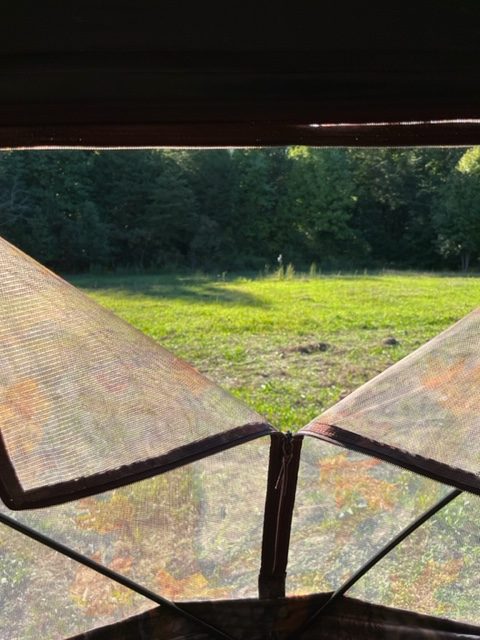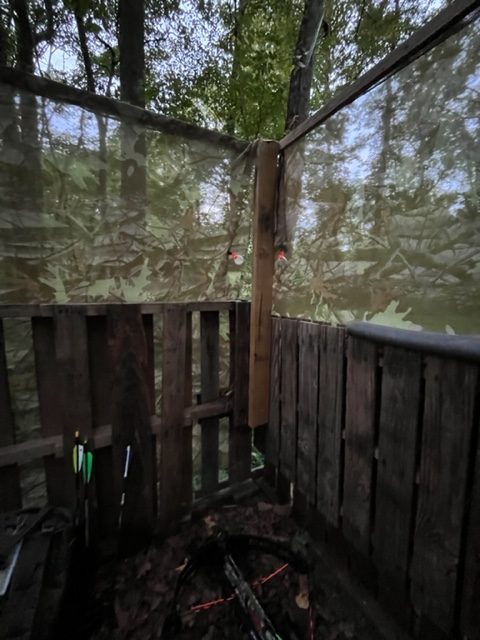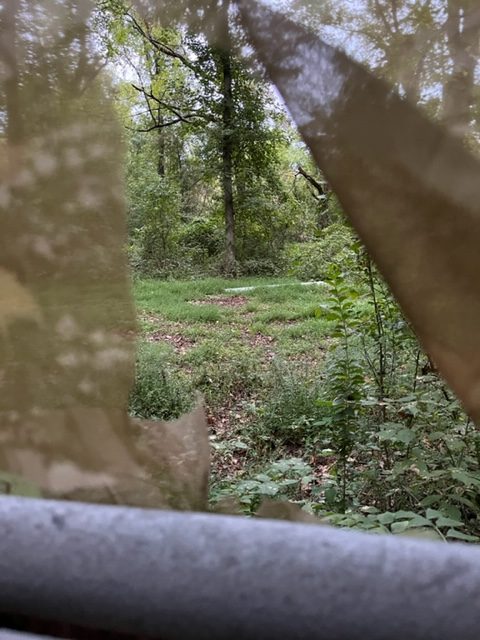What makes a successful hunt? Is it when you get a bag limit of birds? Or is it when you finally get that buck you have been watching for a year on a trail cam? It could be watching your son or daughter get their first deer.
There are many ways to define what makes a hunt successful. They will all be different for each individual and they are all valid.

I went hunting for the first time this season on Friday afternoon. Bow season in North Carolina opened on September 10th and this was my first chance to get out. I was invited by my daughter’s neighbor Zack to hunt some private land where he had set up a number of blinds as well as food plots. He graciously set me up in “the Honeyhole” where I had taken a 5-pointer last year. No shot would be longer than 50 yards and that post you can see in the middle is right at 25 yards.
While Zack got a doe where he was hunting, not one deer appeared where I was hunting. I had covered myself with Nose Jammer and set out discs with Ever Calm calming scent on them. Nonetheless, they just didn’t move.
Was my hunt unsuccessful? In the sense that I didn’t bag a deer, yes. However, in the greater scheme of things it was a successful hunt. I got to sit out in nature and enjoy the quiet. While I did hear road noise from nearby roads, I also heard the birds sing while they scratched around the ground looking for food. I didn’t have to answer phone calls or worry about answering emails. I could just relax.
I repeated this on Saturday morning on land inherited by the Complementary Spouse. I had built a blind last year using wood pallets, scrap wood, mis-mixed paint, and remnants of camo cloth. It is kind of rough and the particle board flooring is a little wonky. I set it back in the edge of the woods by a right of way. In the past, I had captured many photos of deer on trail cams as they used it as a path.

A couple of weeks ago I set out some deer minerals in the same location where I had made a mineral lick the year before. I got in the blind about a half hour before dawn and got set up. You can see my view of that area in the picture below. Just beyond that tree in the middle of the picture is a shallow, slow-moving, creek.

If you guessed that I was skunked again, you would be correct. Nonetheless, I considered this a successful hunt. I saw a Great Blue Heron fly up from the creek, I heard multiple woodpeckers go to work on the trees behind me, I heard the other birds singing around me, and I enjoyed the cool, quiet morning while I sat quietly hoping a deer would cross my path.
Would I have liked to have taken a deer either day? You bet. I am starting to run low on venison in the freezer and would like to have filled it with a nice fat doe. That said, I ended both days with what I considered a successful hunt. Hunting is like life. It is all in what you make of it.
As a postscript, Zack’s 10-year old son took a very nice 8-point buck last night on the private land where I hunted on Friday afternoon and evening. Father and son had a successful hunt.
